September’s Patient of the Month is small, dark, and handsome. Meet 24-873, a melanistic Eastern Gray Squirrel currently in care at the Sanctuary.
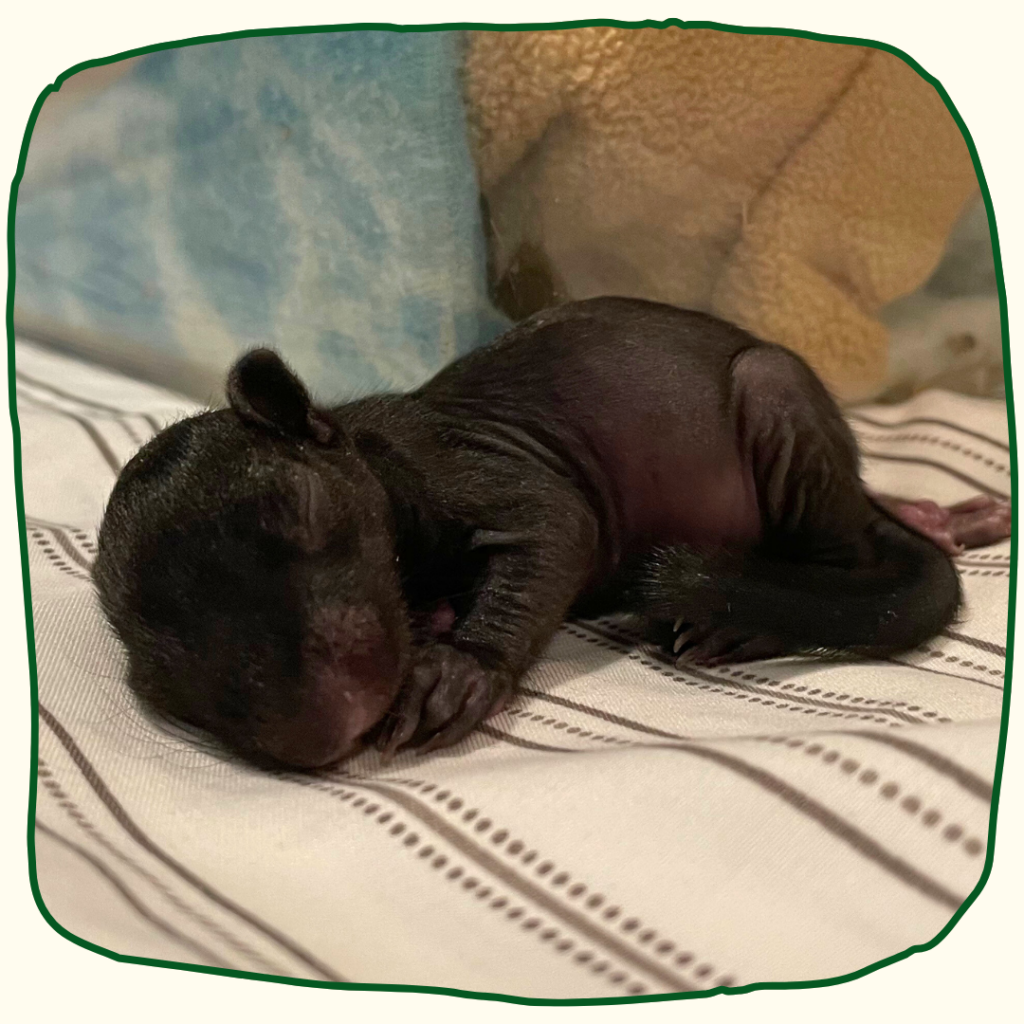
This fascinating baby squirrel arrived at RWS in mid-August after his nest was cut down by some folks doing tree work in Augusta County. Our friends at the Wildlife Center of Virginia transferred him and his siblings to RWS the next morning for longterm rehabilitative care. 24-873 was just about one week old and weighed a mere 34 grams!
Though he had no fur and his eyes were closed, we knew right away that he was unique from his unusually dark skin. After adjusting to round-the-clock formula feedings, this patient soon began to grow a beautiful, pitch-black coat, in stark contrast to his silvery-gray siblings. Though we never formally name our patients, our staff jokingly nicknamed 24-873 “The Void.” 😆
Today, The Void weighs 173 grams: a testament to the consistent, professional care he’s received at RWS. Earlier this month, he finally opened his eyes! He is in the process of weaning off specialized squirrel formula and is a champ when it comes to eating solid foods. The enrichment we’ve crafted for our nursery squirrels, like food puzzles and fresh tree clippings, have helped develop their gnawing skills and bite strength – important for cracking nuts! We anticipate moving this squad to one of our pre-release enclosures next week where he’ll improve his climbing and foraging capabilities. In particular, we’ll monitor his caching skills – essential for squirrels to master ahead of release.
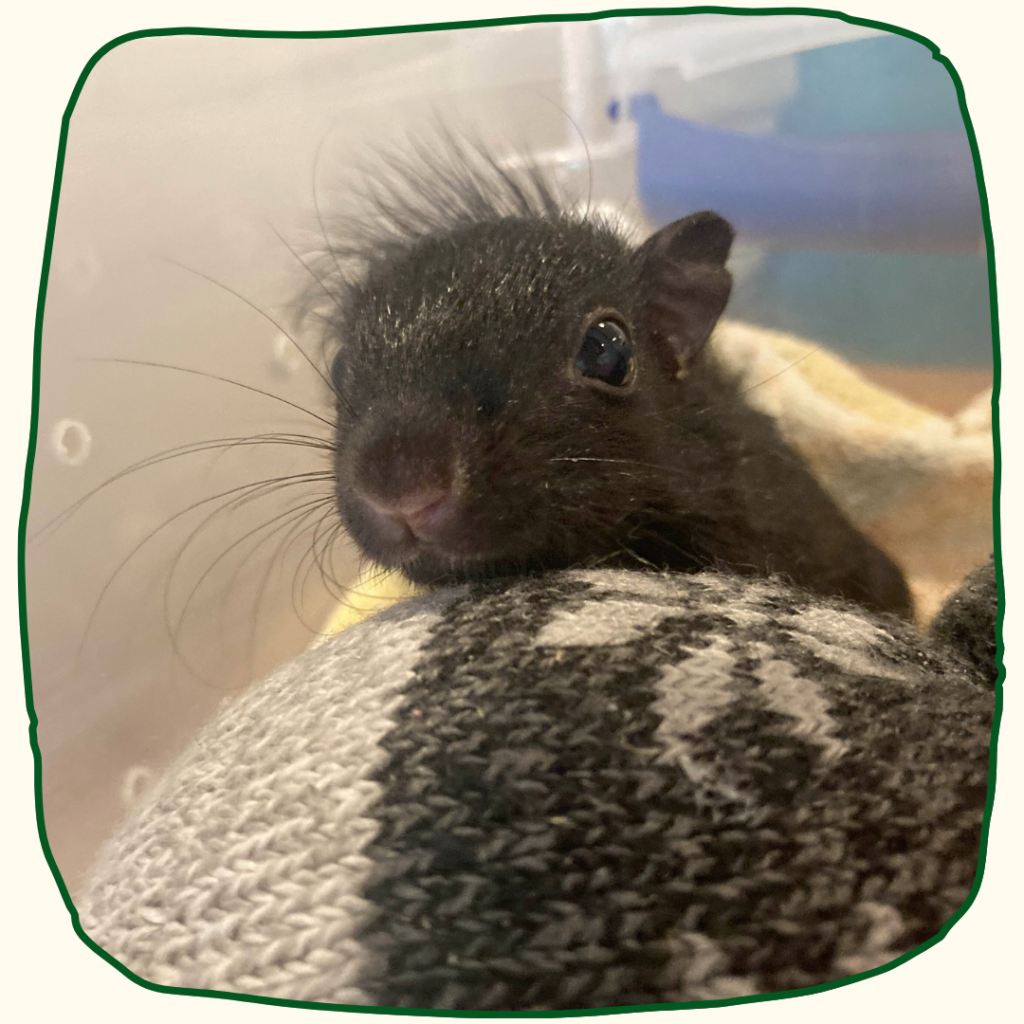
Melanism is a rare genetic mutation that results in an excess production of melanin, the pigment that gives color to skin, hair, and eyes. Today, only about 1 in 10,000 gray squirrels display this gorgeous black coat. On the other side of the spectrum from melanism are leucism and albinism. Leucism refers to a genetic mutation leads to a partial loss in pigment, whereas albinism is a mutation that leads to no pigment production at all. Animals with albinism often do not survive long in the wild because their eyesight is compromised and they lack virtually any camouflage. Leucism, on the other hand, typically does not impact vision, and leucistic animals may live well into reproductive age and beyond. We cared for a leucistic baby squirrel last fall. Check out the comparison! ⬇️
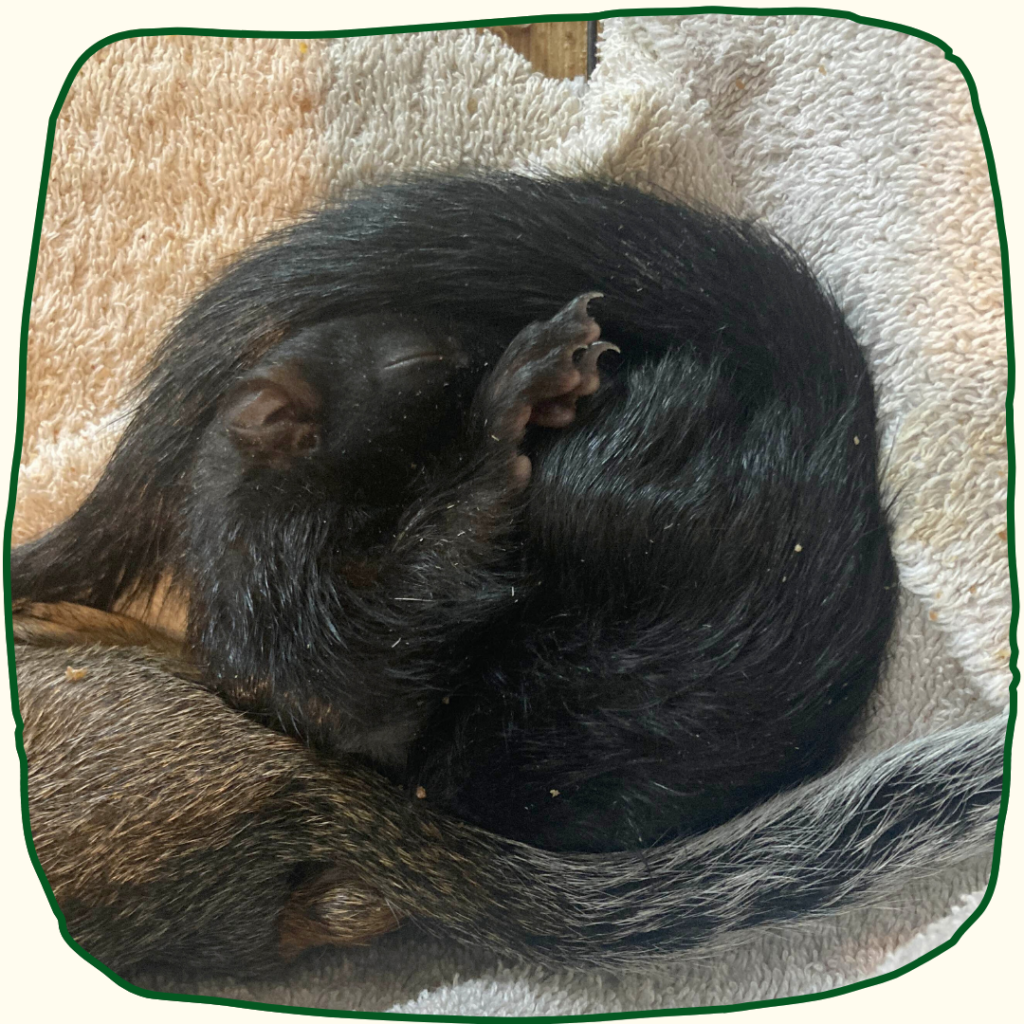
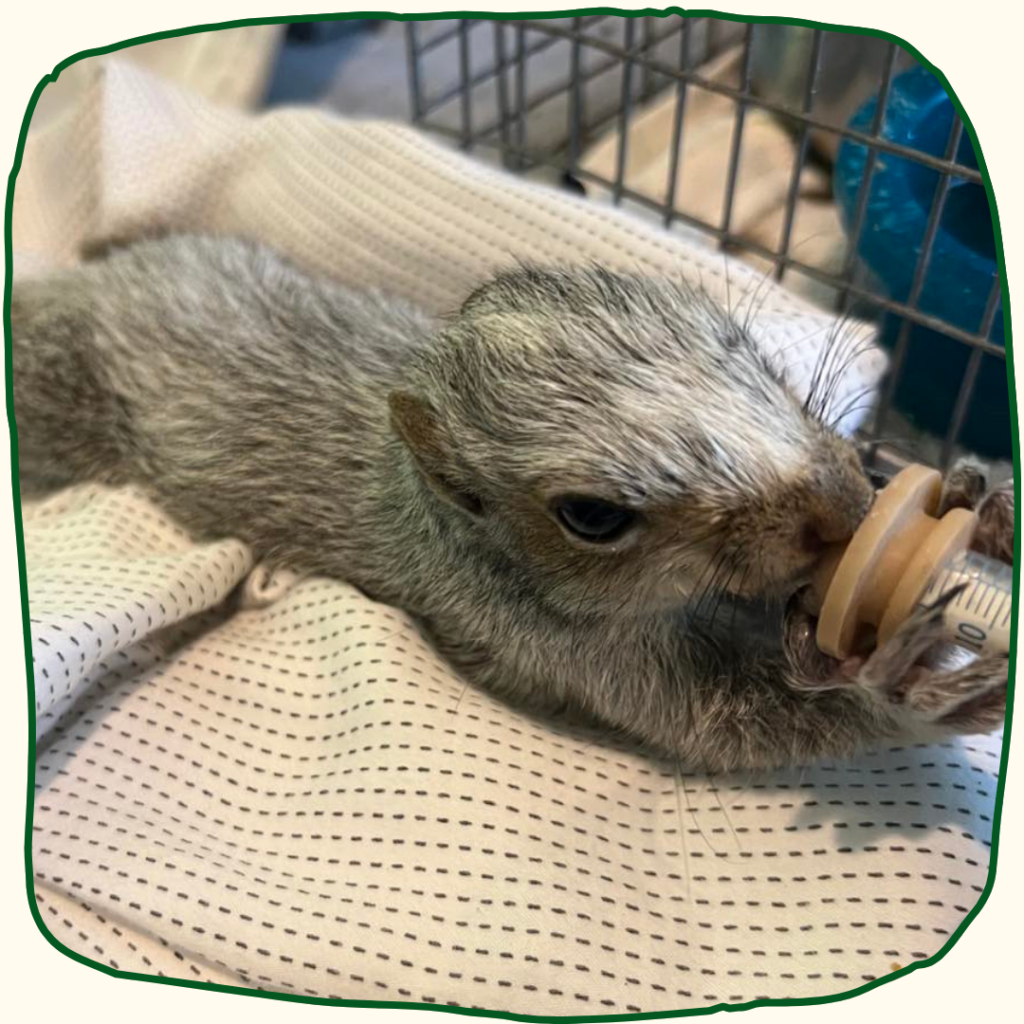
You may be surprised to learn that black squirrels were once the norm in eastern forests over 150 years ago! Their dark coloring provided essential camouflage and warmth in colder, dense forests. However, persistent logging of old growth forests has left the east coast (and much of America, really) with new growth forests that lack a dense, complex understory. As a result, strikingly dark squirrels like 24-873 stand out and have fewer hiding spots in most forests today. Dark squirrels are more vulnerable to predators and hunters, which has led to a quick and dramatic decline in their numbers.
Interestingly, scientists have noticed that black squirrels are increasing in prevalence in more urban areas! The reasons behind the rising rate of dark squirrels in cities aren’t totally understood, but scientists believe that a lack of hunting in cities and the ability for drivers to better see black squirrels on the road compared to gray squirrels may contribute to black squirrels surviving and reproducing more successfully.
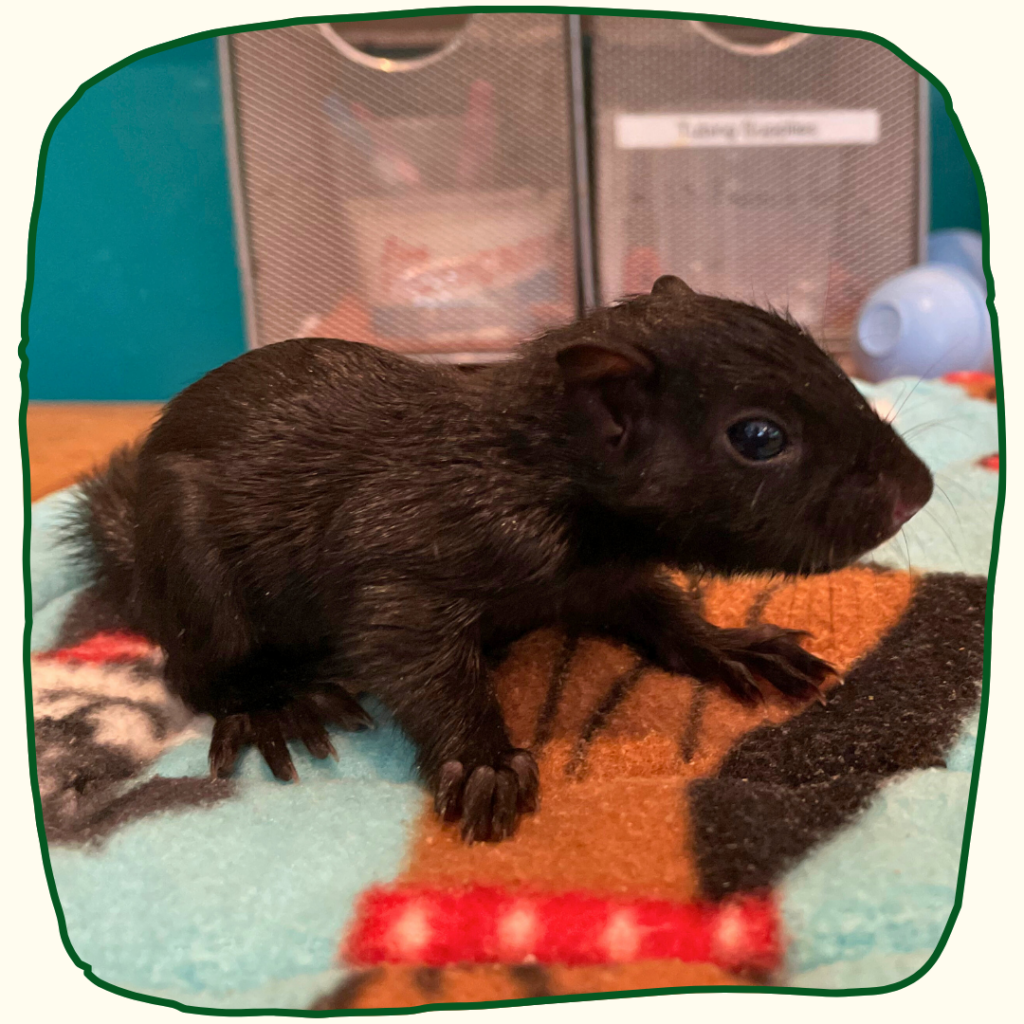
You can help scientists better understand biodiversity’s changing landscape by contributing to Squirrel Mapper! Squirrel Mapper is a citizen science project sponsored by the National Science Foundation and researchers from sixteen universities. By submitting pictures of squirrels you observe in your community, you’ll help paint a picture of squirrel morphology and evolution across the Eastern United States and Canada.
We anticipate that with our continued care at the Sanctuary, The Void will continue developing appropriately and be ready for release with his siblings later this fall.
This patient is more than just a beautiful rarity—he’s a reminder of how special our natural world is.
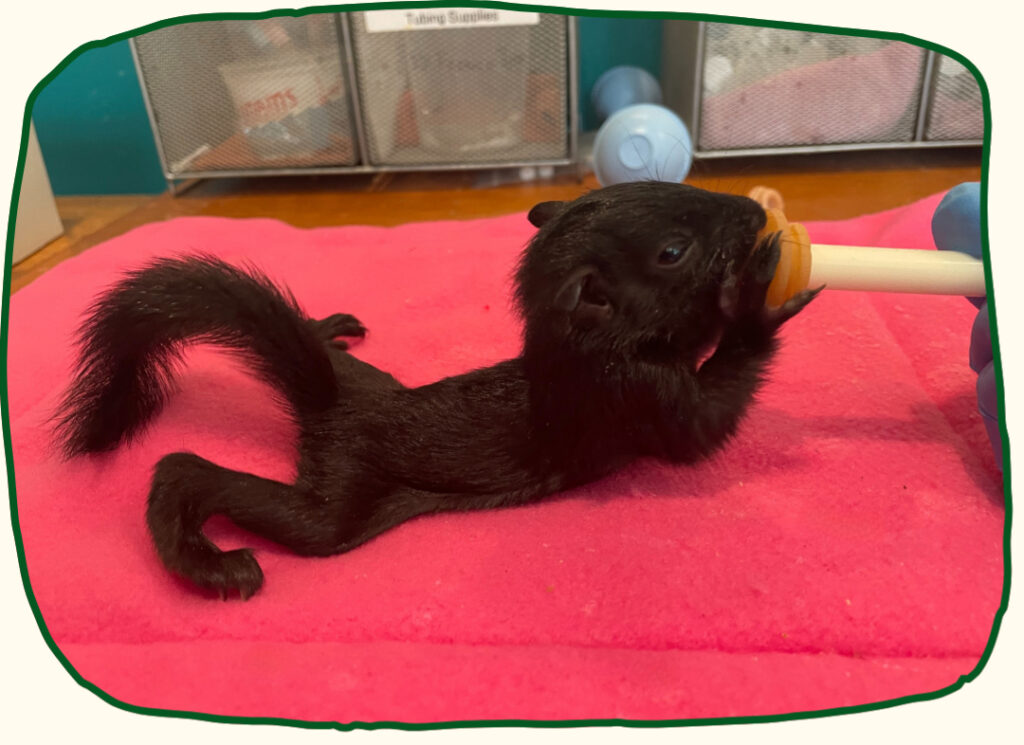
September 26, 2024
Published:
Be the first to comment!